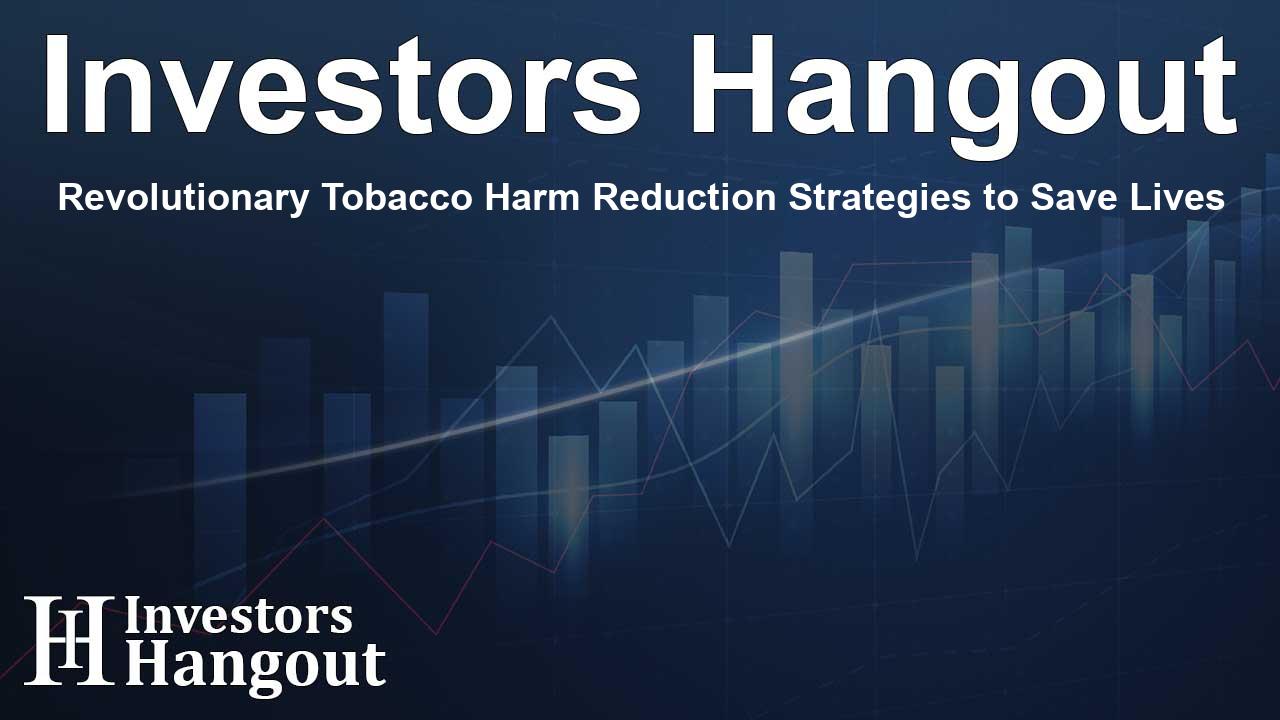Revolutionary Tobacco Harm Reduction Strategies to Save Lives

Understanding the Global State of Tobacco Harm Reduction
The Global State of Tobacco Harm Reduction (GSTHR) report has gained significant attention for its comprehensive analysis of the tobacco landscape. This report emerges amidst an urgent call to address the issues surrounding tobacco use, which is responsible for millions of deaths worldwide. With increasing awareness and data available, the GSTHR offers a fresh perspective on how innovative solutions can be employed to minimize the harm associated with smoking.
The Role of Tobacco Harm Reduction
At its core, tobacco harm reduction (THR) focuses on strategies that can significantly lower the risks associated with tobacco consumption. By shifting the focus from cessation alone to a broader strategy that includes safer alternatives, the potential for reducing health complications becomes more attainable. The GSTHR report highlights the effectiveness of various THR methods, including e-cigarettes and heated tobacco products, that can empower users to make healthier choices while reducing their exposure to harmful combustibles.
Innovations in THR Products
Among the key takeaways from the report are the innovations in THR products. These modern alternatives are engineered to offer nicotine satisfaction without the harmful byproducts of traditional smoking. The adoption of these products has been steadily rising due to a growing acceptance among the public and advancements in technology. These innovations promise to disrupt the tobacco market, providing better options for both current smokers and those seeking to quit.
Impact on Public Health
The implications of adopting a THR framework extend far into public health. The GSTHR notes that effective harm reduction strategies could exponentially decrease the rates of tobacco-related diseases and deaths. By prioritizing THR, healthcare systems can alleviate the immense burden placed on them by smoking-related illnesses. Less reliance on ineffective cessation methods and a strategic push towards reduced-risk alternatives resonate well with the public health goal of safe smoking.
The Importance of Education and Policy Change
Moreover, the report emphasizes the necessity for education surrounding THR options. Misinformation and stigma continue to hinder the acceptance of safer alternatives. A well-informed public is vital for the success of harm reduction initiatives. Policymakers need to step up and establish regulations that encourage THR innovation while ensuring the safety of these products. Collaboration between governments, public health organizations, and the tobacco industry will be paramount in shaping the future of tobacco use.
Looking Ahead: The Future of Tobacco Harm Reduction
The future of THR is promising, especially as more evidence continues to emerge supporting safer alternatives. The GSTHR report presents a compelling case for prioritizing these strategies, which could lead to transformative changes in how society views tobacco use. Key stakeholders and public health advocates must come together to create a conducive environment for THR strategies to flourish.
Community Engagement and Support
Increasing community engagement is another crucial element in promoting THR. Local organizations and educational institutions can play a role in spreading awareness about the benefits and safety of harm reduction products. Equipping communities with knowledge will empower individuals to make informed choices about their health and well-being, ultimately leading to lower tobacco-related morbidity rates.
Frequently Asked Questions
What is the Global State of Tobacco Harm Reduction report?
The GSTHR report analyzes current trends in tobacco use and outlines strategies for reducing tobacco-related harm and mortality globally.
How does tobacco harm reduction benefit public health?
THR offers reduced-risk alternatives to traditional smoking, potentially decreasing the incidence of tobacco-related diseases and easing pressures on healthcare systems.
What are some examples of harm reduction products?
Examples include e-cigarettes, vape products, and heated tobacco devices designed to provide nicotine without harmful combustion.
Why is education important in THR?
Education increases public understanding of THR, combating stigma and misinformation, thereby enabling individuals to make better health choices.
What role do policymakers play in THR?
Policymakers are essential in creating regulations that support THR innovation and ensure product safety, ultimately guiding public health toward safer tobacco use.
About Investors Hangout
Investors Hangout is a leading online stock forum for financial discussion and learning, offering a wide range of free tools and resources. It draws in traders of all levels, who exchange market knowledge, investigate trading tactics, and keep an eye on industry developments in real time. Featuring financial articles, stock message boards, quotes, charts, company profiles, and live news updates. Through cooperative learning and a wealth of informational resources, it helps users from novices creating their first portfolios to experts honing their techniques. Join Investors Hangout today: https://investorshangout.com/
Disclaimer: The content of this article is solely for general informational purposes only; it does not represent legal, financial, or investment advice. Investors Hangout does not offer financial advice; the author is not a licensed financial advisor. Consult a qualified advisor before making any financial or investment decisions based on this article. The author's interpretation of publicly available data shapes the opinions presented here; as a result, they should not be taken as advice to purchase, sell, or hold any securities mentioned or any other investments. The author does not guarantee the accuracy, completeness, or timeliness of any material, providing it "as is." Information and market conditions may change; past performance is not indicative of future outcomes. If any of the material offered here is inaccurate, please contact us for corrections.